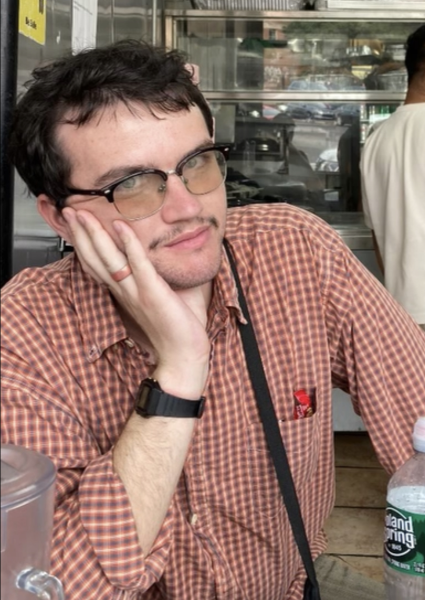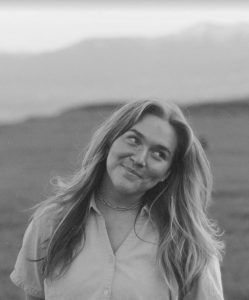“Audition” (1999)
Described by critic Mike D’Angelo as “the most amazing fluke in cinema history,” this iconic film from workhorse director Takashi Miike does not disappoint. Although endless pages can and have been written about this one, the less said the better. Go in as blind as possible and enjoy the ride.
“Things” (1989)
The year is 1989. Barry J. Gillis and Andrew Jordan set out to make a movie with only a cheap video camera and a dream. What they ended up creating is something as indescribable as it is captivating. “Things” is a shot-on-video fever dream that needs to be seen to be believed. While some may laugh at the film’s amateurish qualities, more open-minded viewers will find much to appreciate about its DIY charm, oddball humor and surreal aesthetic. Whatever you want to say about this one, it’s undeniable that it delivers images you can’t see anywhere else. Besides, what’s better than a couple of buddies making art together? Watch with at least a friend or two.
“The Black Cat” (1934)
Uniting legends of the screen Boris Karloff and Bela Lugosi, and with auteur maudit par excellence Edgar G. Ulmer at the helm, this gothic gem of a picture is easy to recommend. From striking, impressionistic visuals, killer atmosphere, secret rituals, the horrors of war and the ghosts of the past, there’s something here for everyone. Best of all, it’s only 65 minutes.
“Abbott and Costello Meet Frankenstein” (1948)
Also starring Bela Lugosi, this is one of the best horror comedies ever. The premise is simple: a pair of working-class stiffs (Bud Abbott & Lou Costello) find themselves in the middle of a bizarre plot involving Dracula, Frankenstein and a big scary castle, aided in their efforts by a morose Wolfman. Modern audiences may turn their nose up at the idea of watching old-timey comedians capering about with cheap-looking monsters, but I guarantee this little picture is as funny as it is breezy.
“A Chinese Ghost Story” (1987)
One look at the production credits will tell you all you need to know about this horror-comedy from credited director Siu-Tung Ching and producer/alleged ghost-director Hark Tsui. Coming amidst the Hong Kong film industry’s miracle decade, “A Chinese Ghost Story” stars heartthrobs Leslie Cheung and Joey Wang. It’s a tale adapted from a Qing-dynasty era short story. This movie delivers on everything you’d want and then some: swordfights, zombies, ghosts and a compelling romance at the center. Enduringly popular throughout Asia, you can’t go wrong with this stone-cold classic.
“Ganja & Hess” (1973)
“Ganja & Hess” was well-received by French critics but extremely misunderstood (by white audiences) domestically. Writer-turned-director Bill Gunn’s 1973 vampire film is a dazzling metaphor-rich marriage of sensibilities. Starring Duane Jones (of “Night of the Living Dead” fame) and Marlene Clark, the film tells the story of a wealthy anthropologist (Jones) who inherits a vampire curse from an ancient dagger. Subsequentially, a romance with his now-dead assistant’s wife (Clark) sparks. The striking visuals and hypnotic atmosphere are enough to recommend. However, this film’s real selling point is its use of vampirism as a jumping-off point for exploring more complex topics. Black consciousness, assimilationism, gender roles and religion, among other themes, are all put under the microscope in this bold arthouse classic.
“Zombie” (1979)
Known internationally as “Zombi 2,” this might be Italian genre cinema king Lucio Fulci’s greatest achievement. As with all of his best films, the primary appeal is the aesthetics. It is rendered all the more unnerving by the free-flowing dream logic he utilizes so expertly. Taking place primarily during the daytime, this sun-drenched zombie picture follows the daughter of a missing scientist and her journalist friend as they travel to the Caribbean to investigate her father’s disappearance. Fulci’s sense of texture is unmatched here. The more gruesome visuals are juxtaposed with the lurid beauty of their surroundings. If you’re looking for pure sleazy entertainment (or just want to see a zombie fight a shark), check this one out.
“Cure” (1997)
Hugely influential yet criminally underseen in the West outside of cinephile circles, Kiyoshi Kurosawa’s “Cure” is a sickly disquieting procedural that renders even the most banal disturbing. While by no means a difficult film, it offers no easy thrills. The horror comes from the quiet accumulation of details over the two-hour runtime. It easily clears any of its manifold imitators. Come for the genre elements, stay for the impressive visual formalism and unnerving exploration of the void at the center of human society.
“Splatter Farm” (1987)
One of the greatest “regional horror” movies of all time, this one is as funny as it is upsetting. Directed by twin brothers Mark and John Polonia, “Splatter Farm” ‘s main pleasures come from its rich sense of texture. Shot on video in rural Pennsylvania, anyone who’s spent any amount of time in the countryside or visiting that one relative will instantly find something to latch onto. Just don’t get too comfortable …
“Vampyr” (1932)
What happens when one of the greatest silent-era filmmakers tries making a horror picture? And what if it also happens to be his first film in sound? The answer is one of cinema’s great mood pieces. With a plot that could easily be summarized in a sentence or two, Carl Theodor Dreyer’s tale of vampirism in a small French village offers viewers pleasures of another kind. It gives an almost experimental barrage of images that add up to something heavier than words can describe. Probably the least accessible film on this list, “Vampyr” is also the most rewarding.




